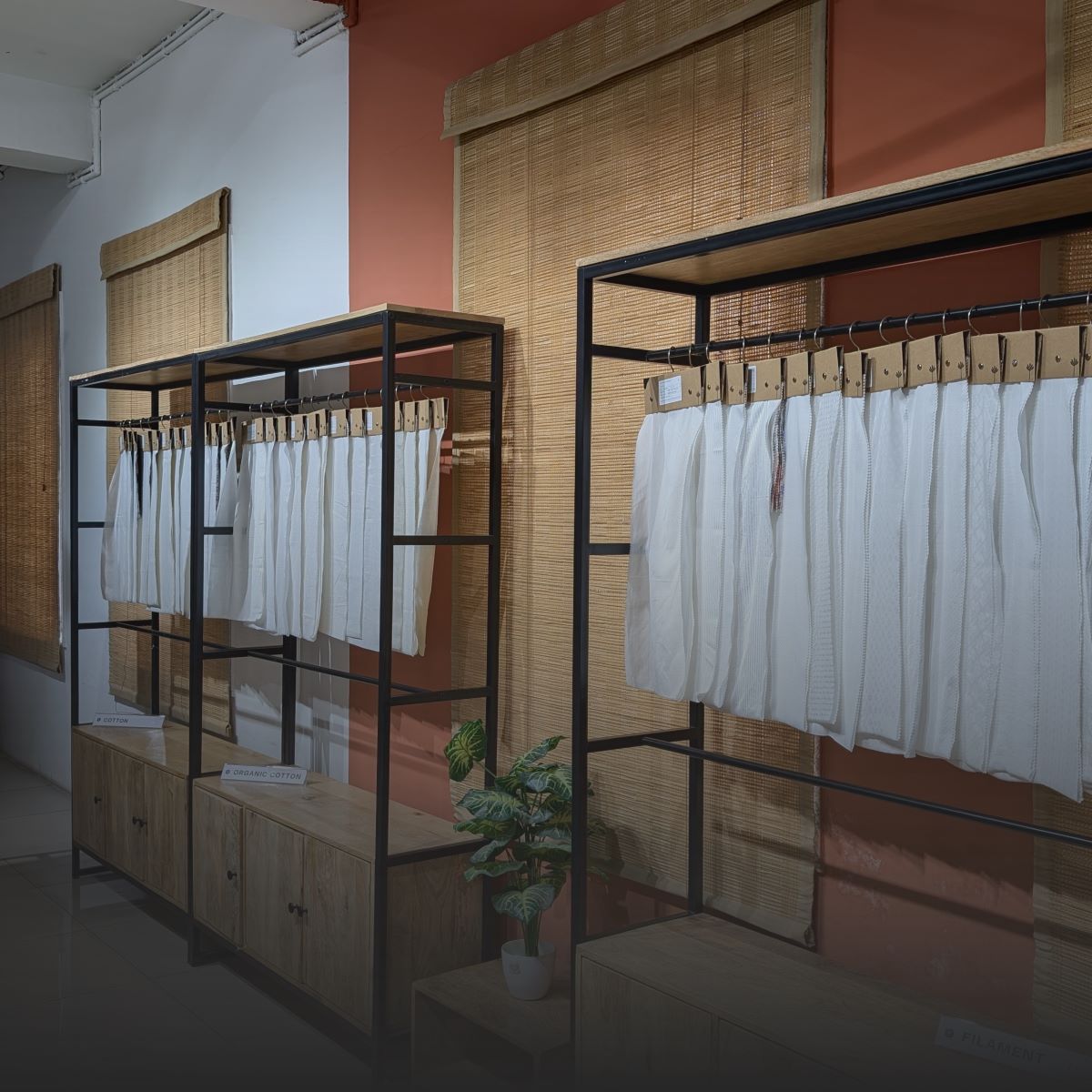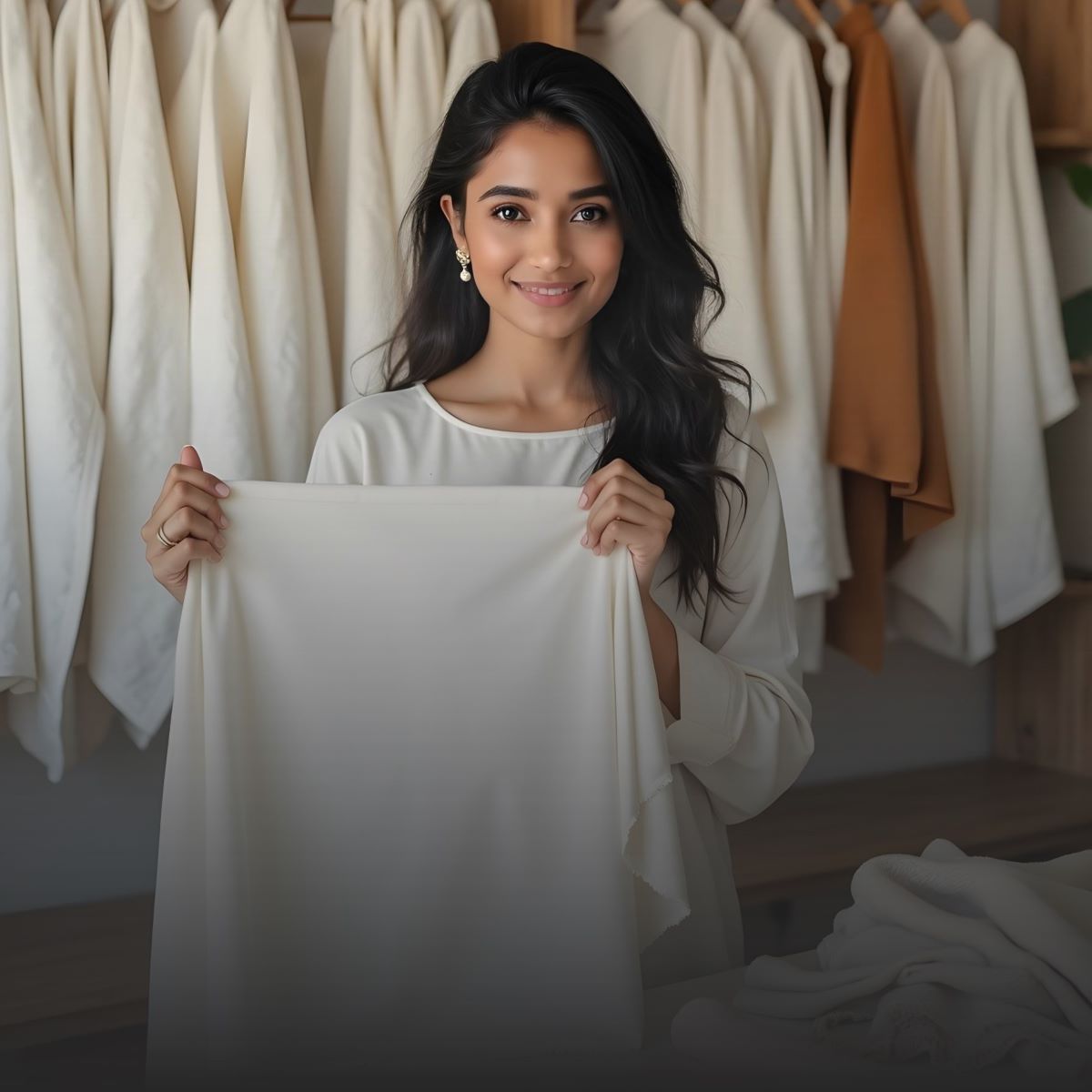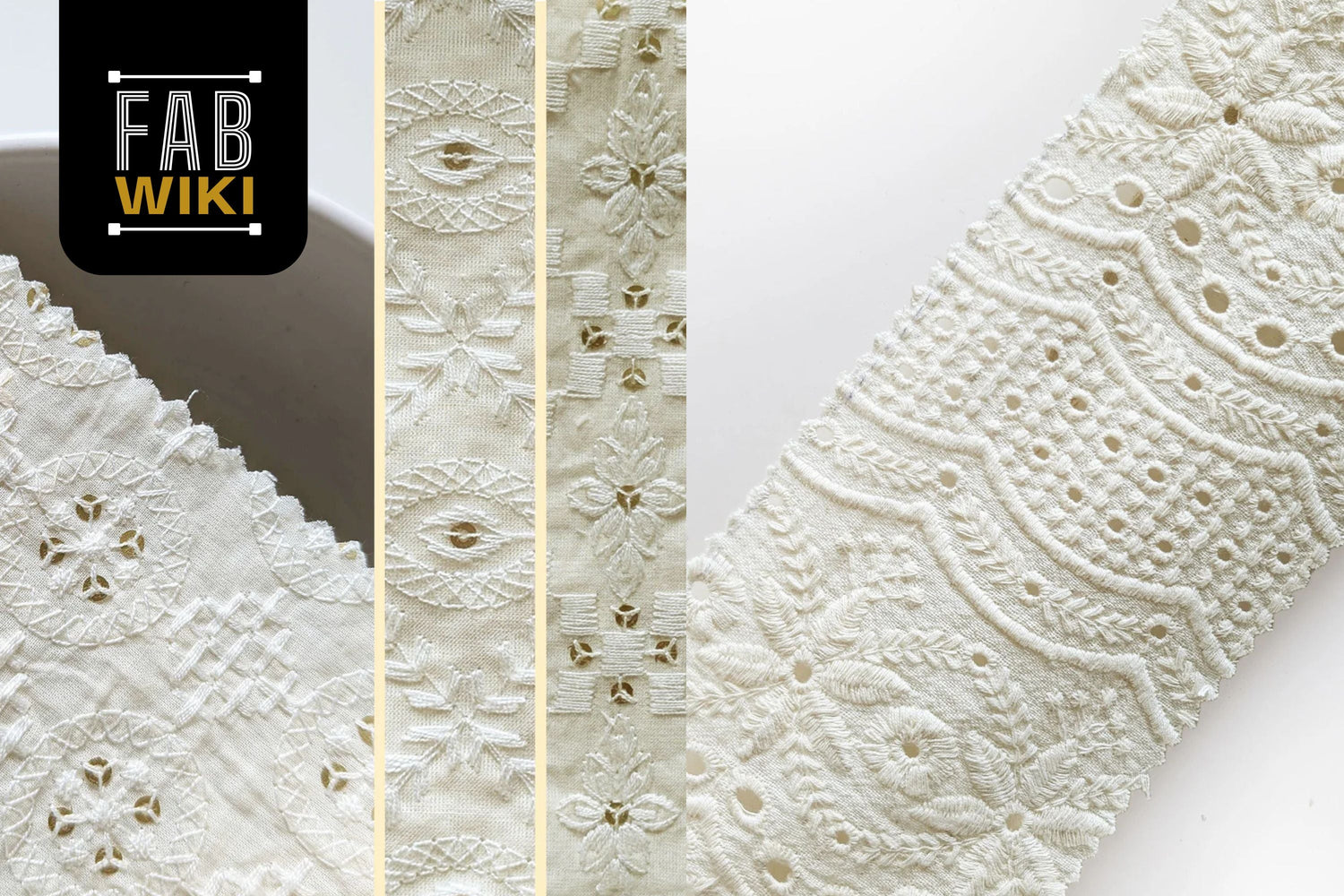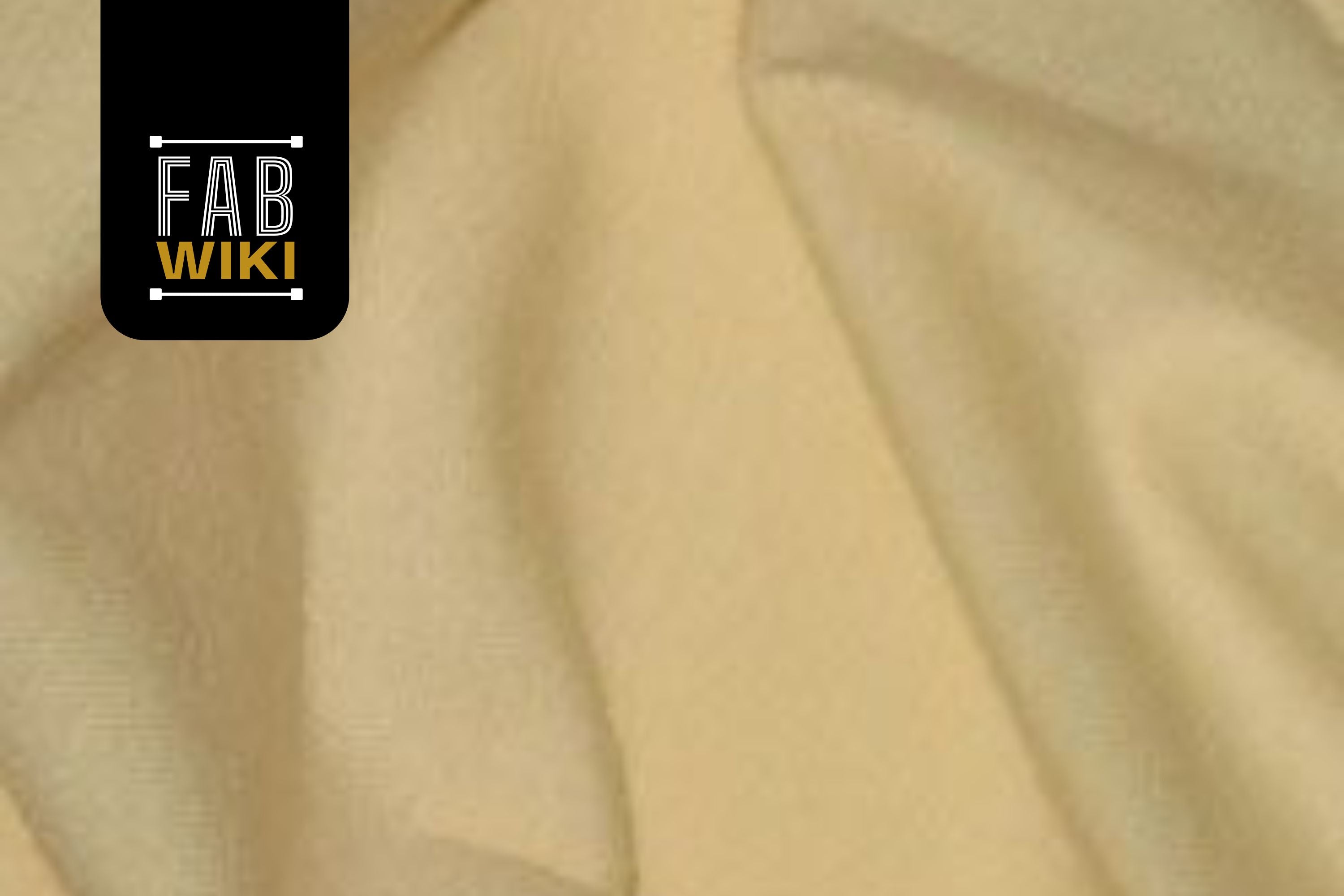Schiffli fabric is a delicate, embroidered textile, which is popular for its twisted, lace-like designs. Further, the fabric is built by using multi-needle Schiffli machines. Frequently, the fabric is crafted on cotton, voile, or net bases, it blends elegance with versatility, making it a popular choice for ethnic wear, Western outfits, and home decor. Its delicate charm continues to influence modern fashion trends.
What is Schiffli Fabric?
Schiffli Fabric refers to a type of mechanized embroidery that creates eyelets and cutwork designs on a base fabric. The name originates from the shuttle's boat-like shape used in the embroidery machine. It is not a type of fibre, but rather a decorative technique applied to fabrics like cotton, organza, and voile.
Schiffli is highly valued for its combination of delicate aesthetics, dimensional texture, and durability.
History and Origin of Scheflli Fabric
Isaal Gröbli developed the machines of Scheflli fabric in Switzerland in 1863. It was a revolutionary development, building upon the earlier hand-embroidery machines. Gröbli utilized the machines as a mixture of a consistent threaded needle and a shuttle containing a bobbin (the Schiffli), allowing for a lock-stitch that was far more versatile and durable. Additionally, the development of Grobli paved the route for the mass production of what was once a painstaking, handmade art, making twisted lace and embroidery accessible globally.
Moreover, in the 20th century, the Schiffli fabric extended its reach beyond its origins, and discovered a strong foothold in global textile hubs across Europe, Asia, and the Middle East. Furthermore, the countries likely India, China, Turkey, and Bangladesh embraced the method by integrating local fabrics—namely cotton, voile, georgette, and polyester blends—with traditional design motifs. However, this fusion of European embroidery mechanisms and regional artistry gave rise to diverse interpretations of Schiffli all over the globe.

Essential Facts of Scheffli Fabric
|
Key Information |
Details |
|
Type |
Mechanized Embroidery / Lace |
|
Etymology |
From the Swiss-German word Schiffli, meaning "little boat," referencing the shuttle shape. |
|
Origin |
St. Gallen, Switzerland, circa 1863. Invented by Isaak Gröbli. |
|
Base Fabric Composition |
Commonly applied to natural fibres like cotton (voile, lawn, cambric), also used on synthetics like organza, georgette, and polyester blends. |
|
Key Characteristics |
Intricate, detailed patterns - Lace-like appearance (eyelets) - Textured, dimensional feel - Highly breathable - Durable and machine-made |
|
Care Instructions |
Gentle machine wash or hand wash, dry in shade, iron on reverse side |
Manufacturing Process of Schiffli Fabric
The process of manufacturing the Schiffli Fabric is a mechanized embroidery technique that uses multi-needle Schiffli Fabric machines to make the intricate, lace-like patterns on fabric. Further, includes digitized pattern stitching, chemical etching for eyelet effects, and finishing steps like washing, dyeing, and softening to produce detailed, breathable embroidered textiles.
Here’s the steps of the process:
|
Design Digitization |
A designer creates a pattern, which is digitized into a “punch file” to guide machine embroidery. |
|
Fabric Mounting |
Base fabric (e.g., cotton cambric) is mounted on a large vertical frame inside the machine. |
|
Mechanized Embroidery |
Hundreds of needles stitch the pattern simultaneously using a lock-stitch for durability. |
|
Chemical Etching (Aetzen) |
A sacrificial fabric undergoes a chemical bath to dissolve unembroidered areas, creating the signature lace or eyelet effect. |
|
Washing |
The fabric is cleaned to remove residual chemicals post-etching. |
|
Dyeing |
Fabrics may be dyed to add color, either pre- or post-embroidery depending on design needs. |
|
Finishing |
The fabric is softened, starched, or treated for the desired texture and final appearance. |
Schiffli Fabric’s Global Appeal
Even though Swiss in origin, Schiffli fabric has established a strong and lasting presence all over the global fashion landscape. Further, it has evolved into a staple in both traditional and modern wear, commonly utilized in dresses, blouses, skirts, tunics, and coordinated sets. From the European runways to Middle Eastern boutiques and Southeast Asian markets, Schiffli fabric is famous for its elegant appearance and breathable comfort.
Because of its lightweight, airy structure, Schiffli fabric is particularly favored in warm climates, where it features prominently in seasonal collections for spring and summer. Moreover, the designers across the globe integrate local textile traditions with Schiffli's pure embroidery method, frequently adapting the fusion fashion. This cross-cultural creativity has given rise to contemporary bridalwear, evening gowns, resort collections, and luxury casualwear.
With its versatility, global appeal, and capability to embrace the diverse aesthetic sensibilities, Schiffli continues to be a fashion-forward yet heritage-rich choice in both mainstream and high-end fashion industries worldwide.

Distinction From Other Embroideries
|
Embroidery Type |
Key Difference from Schiffli |
|
Chikankari |
Traditional hand embroidery from Lucknow using stitches like Tephchi and Bakhiya. Lacks Schiffli's machine precision and cutwork/lace-like detailing. |
|
Aari / Zari |
Uses a hooked needle (Aari) for chain-stitch embroidery, often with metallic threads (Zari). Different stitch technique and aesthetic than Schiffli’s lock-stitch. |
|
Phulkari |
Hand-done darn stitch embroidery from Punjab, featuring bold floral and geometric motifs that usually cover the entire fabric—unlike Schiffli’s fine detailing. |
|
Standard Computer Embroidery |
Machine-made like Schiffli but typically used for logos or specific motifs. Has a smaller embroidery area and does not create all-over lace-like patterns. |
Advantages And Disadvantages
|
Advantages |
Disadvantages |
|
Elegant, lace-like embroidery |
More expensive than plain fabrics |
|
Breathable and ideal for warm climates |
Delicate threadwork can snag if mishandled |
|
Durable due to strong lock-stitch |
Limited stretch; not suitable for fitted garments |
|
Versatile for ethnic, Western, and home décor uses |
Requires gentle washing and reverse-side ironing |
|
Compatible with various base fabrics (cotton, voile, net) |
Some variants involve chemical processing requiring safe handling |
Conclusion
The Schiffli fabric has earned global admiration for its elegant embroidery, breathable texture, and versatile application across fashion and home decor. From its origins in Switzerland to its widespread use in regions like India, Europe, and the Middle East, it has now become a staple in both traditional and modern wardrobes. Its intricate, lace-like designs and long-lasting construction make it suitable for each summer dress and ethnic wear to curtains and accessories. With its adaptability to various base fabrics and dyeable options, Schiffli empowers designers worldwide to create stylish, comfortable, and timeless pieces that cater to diverse cultural aesthetics. Therefore, for the best quality of Schiffli fabric, visit FabricLore’s collection - place the order of swatches (starting from 0.57$ ) before you buy.
FAQ (Frequently Asked Questions )
1. Is The Schiffli Fabric Ideal For Hot Weather?
Yes, Schiffli fabric is highly breathable due to its eyelets and cutwork, making it ideal for summer and tropical climates.
2. What Is The Difference Between Schiffli And Chikankari?
Schiffli is machine-made, offering uniform, lace-like embroidery, while Chikankari is a traditional Indian hand-embroidery technique with distinct stitches and textures.
3. Can I Dye Schiffli fabric?
Yes, Schiffli fabrics easily get dyed and are available, especially on cotton bases, and enables personalization in color.
4. Is Schiffli Embroidery Durable?
Yes, the lock-stitch technique used in Schiffli machines creates strong, long-lasting embroidery that resists fraying.
5. Where Can I Buy High-Quality Schiffli Fabrics Online?
You can buy premium Schiffli fabric from Fabriclore, with options to order swatches before making a bulk purchase.
We also happen to be a magnet for suggestions, and would love to catch yours….throw us yours on hello@fabriclore.com



